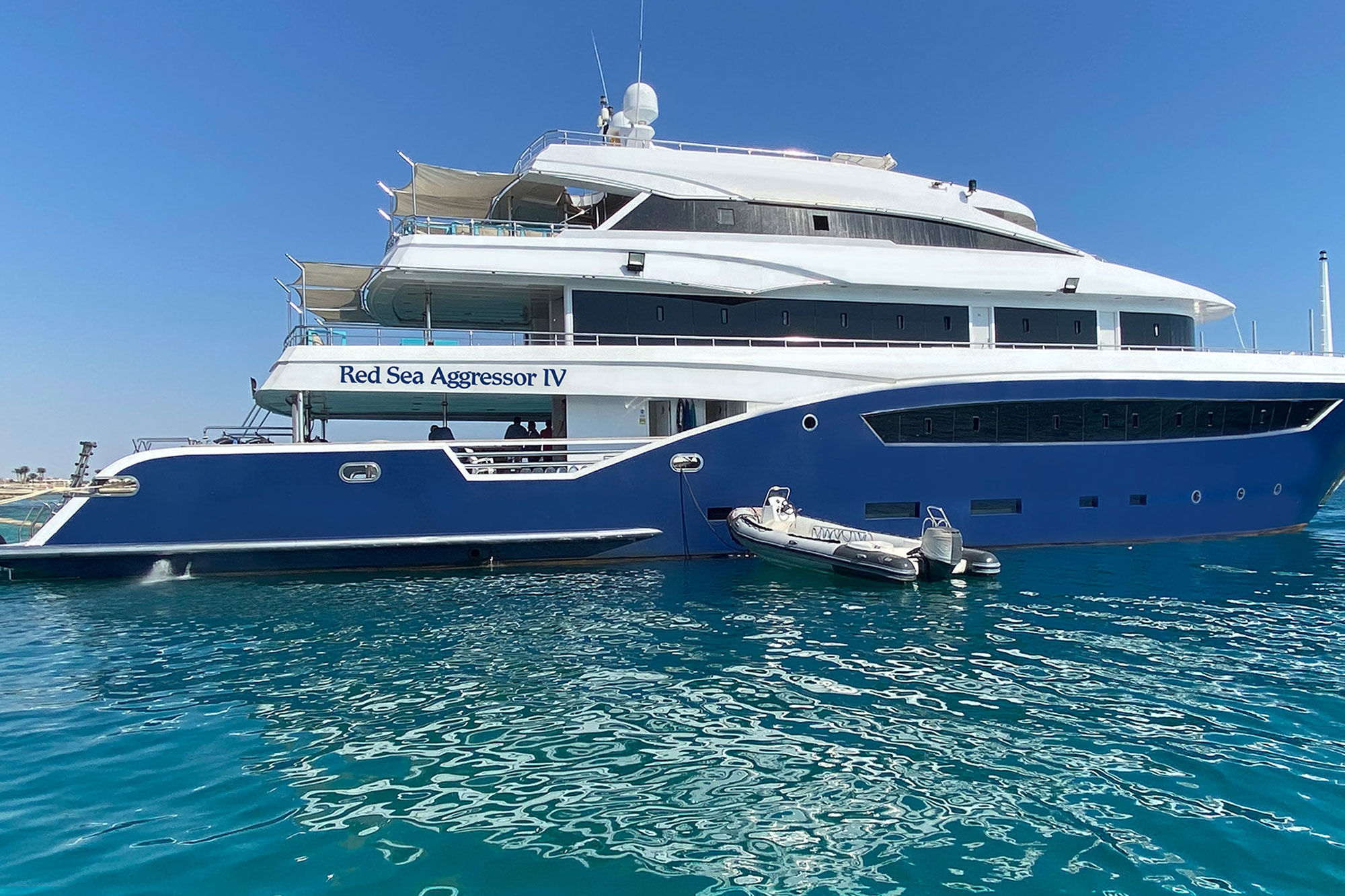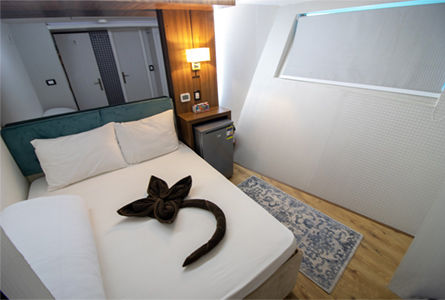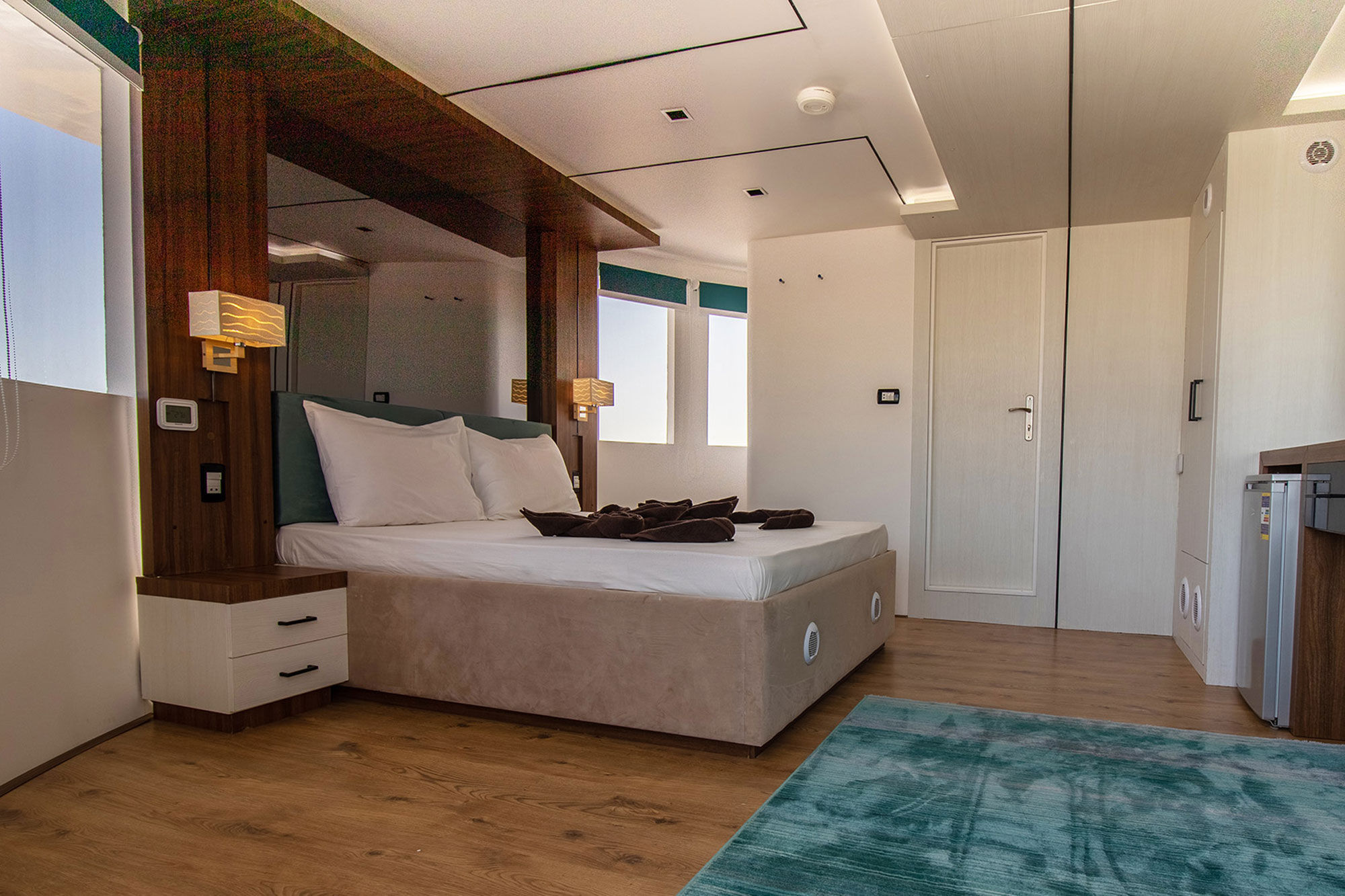日程安排
St. John’s / Daedalus 航线安排
这段令人难忘的红海探险之旅,将带您在埃及南方最具标志性的潜水点,享受激动人心的漂流潜水和宁静的珊瑚礁探索。从Marsa Alam启程,航向偏远的Daedalus Reef,这里有一座由英国于1861年建成的历史灯塔,以及红海最激动人心的一些远洋生物邂逅。继续探索Elphinstone壮观的峭壁、Sha'ab Claude和Malahi的珊瑚花园和游泳通道、Sha'ab Maksour的生机勃勃的台地,以及St. John's Caves令人惊叹的洞穴,在那里阳光的光束照亮了复杂的珊瑚通道。每个目的地都揭示了独特的水下景观,从深水尖塔和彩色珊瑚迷宫到适合放松潜水的宁静泻湖,结合了冒险、探索和红海的自然美景。
示例日程安排
第1天:抵达Marsa Alam或Hurghada。登船从下午3:00开始。(客人可以在下午3点之后的任何时间登船,因为游艇将在周日早晨离开,除非所有客人都在下午5点之前抵达,这种情况下游艇可能在周六晚上出发。)
第2-6天:完成相关部门许可后(上午8:00 - 下午1:00),开始潜水。享受红海的“吃,睡,潜”的美好时光,于下午2:00-4:00之间返回Port Ghalib。
第7天:晚上6:00鸡尾酒会,随后在7:00进行岸上晚餐。
第8天: 上午8:00退房。
主要潜水点介绍
Daedalus Reef (Abu El Kizan): 位于Marsa Alam离岸80公里处,这一引人注目的珊瑚礁以其19世纪的灯塔著称。稳定的洋流吸引着大型远洋生物,包括群游的锤头鲨(hammerheads)、长尾鲨(thresher sharks)、蝠鲼(manta rays)(3月-10月)和夏季出现的鲸鲨(Whaleshark)。这里的珊瑚礁上有色彩斑斓的西兰花珊瑚、海葵园、大象耳珊瑚以及保持得非常完好的硬珊瑚,上面栖息着隆头鱼、鹦嘴鱼和独角鱼。
Elphinstone Reef: 这是一个传奇的、雪茄形的珊瑚礁,以其陡峭的珊瑚墙和南北台地而闻名。潜水员可能会遇到远洋白鳍鲨(Longimanus)、锤头鲨、绸鲨(silky sharks)和灰礁鲨(grey reef sharks),以及在清澈水域中滑翔的梭鱼、金娘鱼和蝠鲼。
Marsa Shoana: Marsa Alam当地最受欢迎的潜点之一,拥有沙质底部和斜坡珊瑚礁,点缀着珊瑚头。这里是绿海龟、射线、海豚,甚至儒艮的天堂,是了解该地区海洋多样性的绝佳地点。
Sha'ab Maksour: 这是一个大型珊瑚礁,拥有南北宽广的台地,展示了红鲷鱼群、犬齿金枪鱼、玳瑁龟以及繁茂的珊瑚结构(包括porites,桌形和圆顶珊瑚)。微距爱好者还可以发现海蛞蝓和流苏海蛞蝓。
Sha'ab Claude: 因其美丽的游泳通道、短隧道和光影如画的洞室而闻名。对于摄影师来说,这是一个理想的浅潜地(最大深度15米),家有洞穴绘鳍鱼和色彩斑斓的礁鱼。
Malahi:在阿拉伯语中意为“快乐”,这个迷宫般的潜点以高耸的珊瑚柱组成复杂的走廊而闻名,里面充满了红鲷鱼、羊鱼、疣海参和海蛞蝓,是潜水员的天堂。
Sataya Reef: 七个珊瑚堆守护着入口,Sataya的泻湖提供了绝佳的漂流潜潜水,并可以看到在珊瑚桌下休息的白鳍礁鲨以及外墙上的鲜艳珊瑚结构。
St. John's Caves: 对于摄影师来说,是一个梦幻景点,这里阳光通过珊瑚礁缝隙透过,给人以光影的洗礼。潜水者可以遇到蓝点射线、刺河豚、扁虫和拿破仑隆头鱼,而夜晚则让西班牙舞者及其他夜行动物更加活跃。
常规潜水日安排探索红海壮丽的海洋生活,从Daedalus Reef如彩色珊瑚和锤头鲨、长尾鲨、灰礁鲨和白鳍鲨的鱼群到滑翔的蝠鲼和偶然出现的鲸鲨。在Elphinstone的峭壁和Marsa Shoana的缓坡潜水,这里是海龟、射线、海豚和儒艮的家园。在Sataya的台地和游泳通道探索色彩艳丽的珊瑚、红鲷鱼、犬齿金枪鱼、玳瑁龟和海蛞蝓等微距生物,St. John's Caves在阳光充足的通道里让您遇见蓝点射线、马戏团般的鹦嘴鱼和夜间独特的西班牙舞者——一次难忘的水下探险。
最后一次潜水将在行程的倒数第二天进行。建议潜水员在最后一次潜水后等待24小时再乘飞机。
(*) 日程描述由船运营商提供。示例日程和地图仅供参考,具体路线和潜水点可能会根据当地法规、客人经验、天气和后勤安排由船长决定进行调整。
 微信扫码添加人工客服
微信扫码添加人工客服



